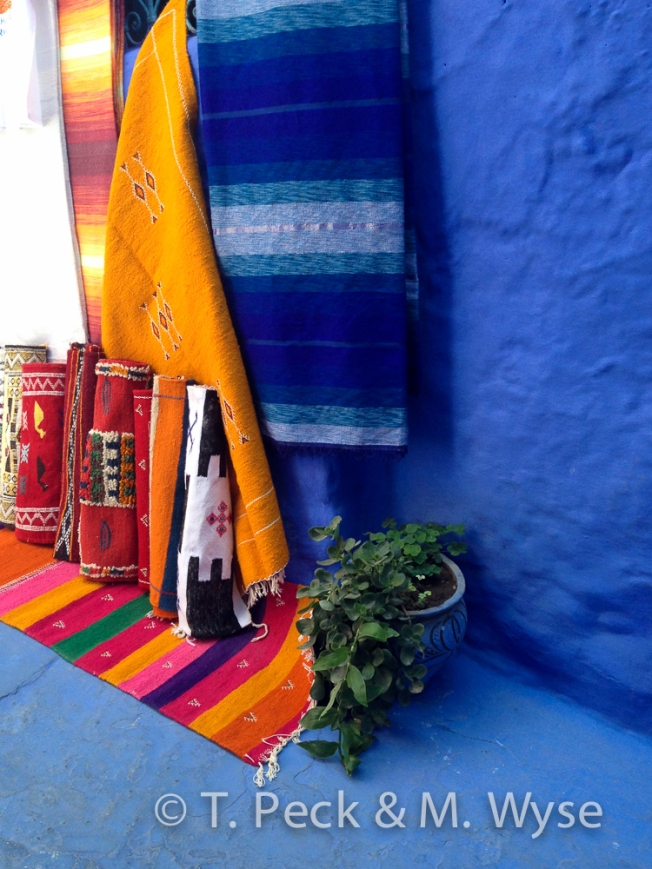This summer, as I was getting ready for my trip to Morocco, I came across this article by Mickalene Thomas in the New York Times Style Magazine. It’s a travelogue of her trip to Italy, where she participated in the “Black Portraiture{s} II” conference hosted by NYU. But in addition to participating in the conference, she shared her unique glimpses into art and life in Italy, allowing us to see it too through her artist’s eyes, from graffiti to leather craftsmen to adverts. She also shared some of the contemporary art she visited during her travels.
And the image she shared of one of Hassan Hajjaj’s photographs stopped me in my tracks.
I’d been trying to learn more about Moroccan art in advance of my trip: both the traditional artisan trajectories of textile artists and wood carvers and leather workers — and contemporary Moroccan art. Hassan Hajjaj’s work is gorgeous: rich, sumptuous colors; portraiture that plays with Moroccan motifs and textiles and is unabashedly modern.

Helen PJI by Hassan Hajjaj (source)

Rider by Hassan Hajjaj (source)
I didn’t get a chance to see any of Hajjaj’s work during my travels in Morocco, but have kept an eye on his work since I first came across him.
So imagine my surprise when I met a friend at the Worcester Art Museum this weekend and found they had a full-on Hassan Hajjaj installation (on exhibit through March 6). Hajjaj’s work is even more luminous and texturally active in person: the photographs of such a high resolution that the textiles have a palpable tactile quality, the borders of the photographs woven.
The exhibit at WAM is part portrait photography, part video installation, part environmental immersion. And seeing Hajjaj’s work in this context gave it new dimension. The exhibit’s walls are painted with patterns borrowed Moroccan textile and decorative motifs. And the installation includes furniture Hajjaj designed fusing sources such as the traditional leather Moroccan ottoman and the utilitarian material culture of contemporary life: milk crates, plastic paint buckets.

Mandisa Dumezweni by Hassan Hajjaj (source: Worcester Art Museum)
Titled “My Rock Stars,” the exhibit features portraits of contemporary musicians whose work has inspired Hajjaj and a dynamic film installation of their performance work. Having just returned from a stay in Essouira, the Gnawan music felt particularly powerful, though the real impact of the film installation came from the collaging of sounds as distinct, individually compelling, and collectively texturally rich as these.
The exhibit is a must-see if you find yourself in New England. And Hajjaj an artist to watch no matter where you live.
I am crushed that I missed his visit to WAM earlier this year. So here’s this for an intention: Let my work matter enough that someday Hassan Hajjaj will photograph me.









